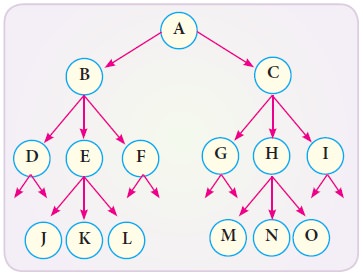Merits, Limitations, Solved Example Problems, Applications - Non-probability sampling | 11th Statistics : Chapter 2 : Collection of Data and Sampling Methods
Chapter: 11th Statistics : Chapter 2 : Collection of Data and Sampling Methods
Non-probability sampling
Non-probability
sampling:
Non
probability sampling is the sampling procedure in which samples are selected
based on the subjective judgment of the researcher, rather than random
selection. This is used when the representativeness of the population is not
the prime issue. Convenience or judgments of the investigators play an
important role in selecting the samples. In general, there are four types of
non probability sampling called convenience sampling, judgment sampling, quota
sampling and snowball sampling.

Convenience Sampling:
The
samples are drawn at the convenience of the investigator. The investigator pick
up cases which are easily available units keeping the objectives in mind for
the study.
Merits:
·
Useful
for pilot study.
·
Use
the results that are easily available.
·
Processes
of picking people in the most convenient and faster way to immediately get
their reactions to a certain hot and controversial topic.
·
Minimum
time needed and minimum cost incurs.
Limitations:
·
High
risk of selection bias.
·
May
provide misleading information.
·
Not
representative sample. Errors occur in the form of the members of the
population who are infrequent or non users of that location and who are not
related with the study.
Snowball Sampling:
In
this type, initial group of respondents are selected. Those respondents are
requested to provide the names of additional respondents who belong to the
target population of interest. It is a sampling method that involves the
assistance of study subjects to identify other potential subjects in studies where
subjects are hard to locate such as sex workers, drug abusers, etc. This type
of sampling technique works like a chain referral. Therefore it is also called
chain referral sampling.
Merits:
·
Appropriate
for small specialized population.
·
Useful
in studies involving respondents rare to find.
Limitations:
·
It
takes more time
·
Most
likely not representative
·
Members
of the population, who are little known, disliked or whose opinions conflict
with the respondents, have low probability of being included.
Judgement Sampling.
The
investigator believes that in his opinion, some objects are the best
representative of the population than others. It involves “hand picking” of
sampling units. That is the interviewer uses his judgment in the selection of
the sample that who should represent the population to serve the investigator’s
purpose. It is usually used when a limited number of individuals possess the
trait of interest. This type of sampling is also known as purposive sampling.
This is useful when selecting specific people, specific events, specific prices
of data, etc.
Example 2.4
Selecting
members for a competition like quiz, oratorical contest to represent a school.
Merits:
·
Low
expense.
·
Minimum
time needed.
·
Easy

Limitations:
·
Highly
subjective.
·
Generalization
is not appropriate.
·
Certain
members of the population will have a smaller chance or no chance of selection
compared to others.
·
This
method does not give representative part of the population, since favoritism is
involved.
Quota Sampling
This
is another non-probability sampling method. In this method, the population is
divided into different groups and the interviewer assign quotas to each group.
The selection of individuals from each group is based on the judgment of the
interviewer. This type of sampling is called quota sampling. Specified sizes of
number of certain types of peoples are included in the sample.
Merits:
·
The
selection of the sample in this method is quick, easy and cheaper.
·
May
control sample characteristics.
·
More
chance of representative.
Limitations:
·
Selection
bias.
·
The
sample is not a true representative and statistical properties cannot be
applied.
Example 2.5
A
selection committee wants to compose a cricket team (11 players) for a test
match.

In
the composition of a cricket team, the selection committee forms groups
compartmentalize as pace bowlers, spinners, all-rounders, batsmen and wicket
keepers. The committee fixed quota for each group based on the pitch and the
opponent teams’ strength. Then, from each group they select the required number
of players using judgement. Look the table.
Related Topics